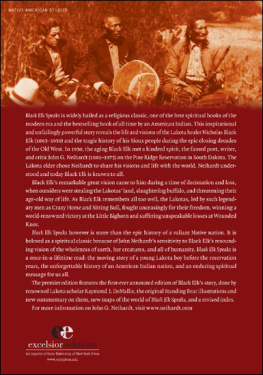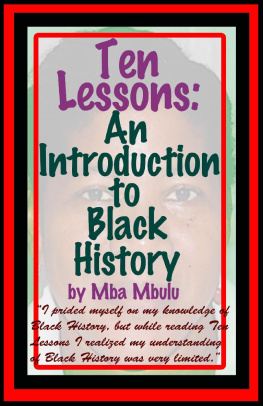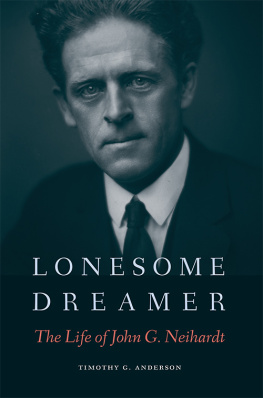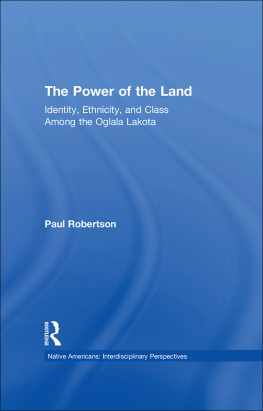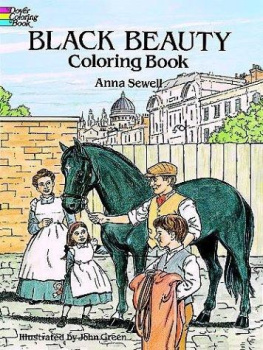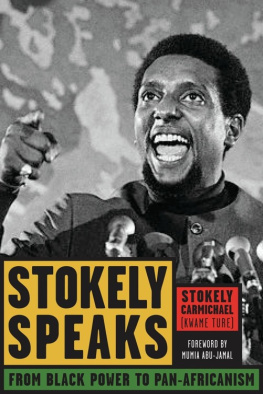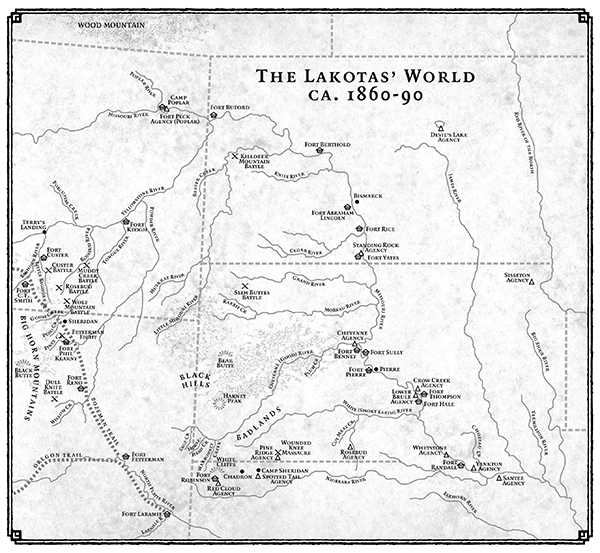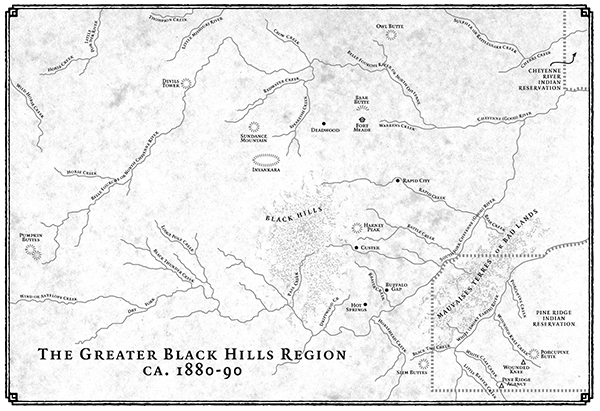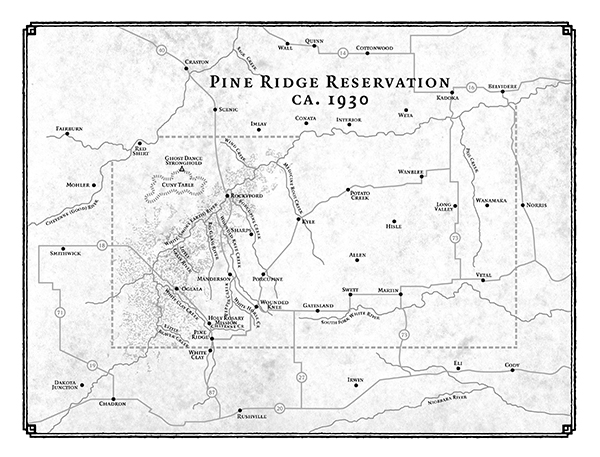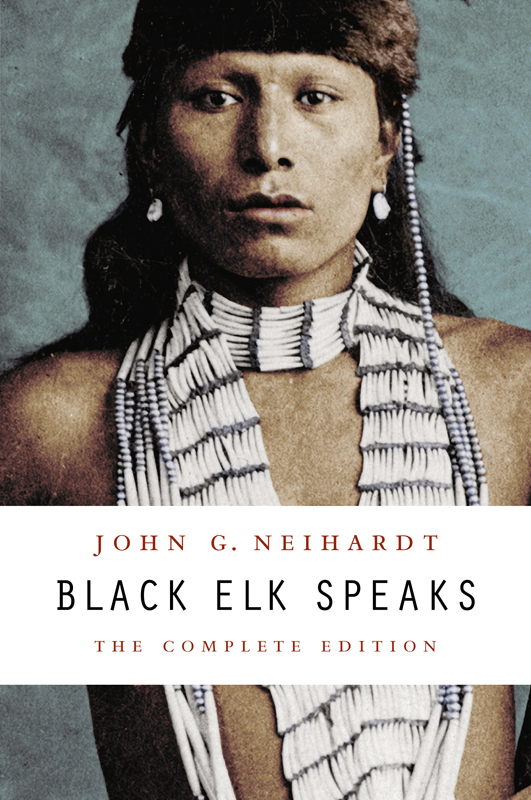
The compelling story of a cross-cultural collaboration that continues to engage scholars and lay readers alike.
Choice
The experience of Black Elk... comes to one great statement, which for me is a key statement to the understanding of myth and symbols.
Joseph Campbell in an interview with Bill Moyers, The Power off Myth
[Black Elk Speaks] is now deservedly recognized as a classic in literature.... It is sufficient that Black Elk Speaks is an extraordinarily human documentand beyond that, the record of a profoundly spiritual journey, the pilgrimage of a people towards their historical fulfillment and culmination, towards the accomplishment of a worthy destiny.
N. Scott Momaday
An American classic.
Western Historical Quarterly
Visionary, action-filled, culturally and historically revealing.
Utah Historical Quarterly
If any great religious classic has emerged in [the twentieth] century or on this continent, it must certainly be judged in the company of Black Elk Speaks.
from Vine Deloria Jr.s foreword
Without question, Black Elk Speaks has been the gateway into the study of Native American religions and literatures for countless thousands of people in many countries.
Suzanne Lundquist, Native American Literatures
A religious classic, both to Indians and non-Indians.
South Dakota History
If a religious text of powerful import occurred in the twentieth century, it was Black Elk Speaks. If both Eastern (Buddhist/Taoist) and Western (Judeo-Christian/Muslim) religious canons are to be challenged and grounded in new theology, a major source will be Black Elk Speaks.
Whole Earth
Once a classic, always a classic. But this one gets better with age.
Lincoln (Nebraska) Journal Star


Black Elk Speaks
The Complete Edition
John G. Neihardt
With a new introduction by Philip J. Deloria
and annotations by Raymond J. DeMallie
University of Nebraska Press
Lincoln and London
2014 by the Board of Regents of the University of Nebraska.
Cover image is from the National Anthropological Archives, Smithsonian Institution.
All rights reserved.
Original printings: 1932, 1959, 1972 by John G. Neihardt; 1961 by the John G. Neihardt Trust; Foreword 1979 by the University of Nebraska Press; 2000 by the University of Nebraska Press; John G. Neihardt beyond Black Elk and Neihardt and Black Elk 2004 by the Board of Regents of the University of Nebraska. Unless otherwise mentioned, the photographs are reproduced by permission of the John G. Neihardt Trust. They may not be used in any manner without the written permission of the John G. Neihardt Trust.
Library of Congress Cataloging-in-Publication Data
Black Elk, 18631950.
Black Elk speaks / John G. Neihardt; introduction by Philip J. Deloria; foreword by Vine Deloria Jr.The complete edition.
pages cm
Includes bibliographical references and index.
ISBN 978-0-8032-8391-6 (paperback: alk. paper)
ISBN 978-0-8032-8393-0 (epub)
ISBN 978-0-8032-8394-7 (mobi)
1. Black Elk, 18631950. 2. Oglala IndiansBiography. 3. Oglala IndiansReligion. 4. Teton Indians. I . Neihardt, John Gneisenau, 18811973.
II . Title.
E 99. O 3 B 4838 2014
978.004'9752440092dc23
[B]
2013049580
The publisher does not have any control over and does not assume any responsibility for author or third-party websites or their content.
What is good in this book is given back to the six grandfathers and to the great men of my people.
Black Elk
Contents
Illustrations
Maps
Figures
Photographs
Standing Bears Drawings
Foreword
Vine Deloria Jr.
The twentieth century has produced a world of conflicting visions, intense emotions, and unpredictable events, and the opportunities for grasping the substance of life have faded as the pace of activity has increased. Electronic media shuffle us through a myriad of experiences which would have baffled earlier generations and seem to produce in us a strange isolation from the reality of human history. Our heroes fade into mere personality, are consumed and forgotten, and we avidly seek more avenues to express our humanity. Reflection is the most difficult of all our activities because we are no longer able to establish relative priorities from the multitude of sensations that engulf us. Times such as these seem to illuminate the classic expressions of eternal truths and great wisdom comes to stand out in the crowd of ordinary maxims.
How fortunate it was that in the 1930s as the nation was roaring into a new form of industrialism a Nebraska poet named Neihardt traveled northward to the reservation of the Oglala Sioux in search of materials for his classic epic work on the history of the West. That their conversations and companionship should produce a religious classic, perhaps the only religious classic of this century, is a testimony indeed to the continuing strength of our species. Black Elk Speaks was originally published in 1932, when people still believed that progress and the assembly line were identical and that the Depression was but a temporary interlude in an inevitable march toward the millennium. Its eloquent message was lost in the confusion of the times. It was not rejected, but it was hardly received with the veneration it now enjoys. The reception, in fact, reflected one of those overly romantic but simplistic views which suggests that all religions have some validity if they prevent us from acts of bestiality and even the most primitive expressions of religious truth are an effort to connect with the larger reality of Western civilization.
Black Elk Speaks did not follow other contemporary works into oblivion. Throughout the thirties, forties, and fifties it drew a steady and devoted readership and served as a reliable expression of the substance that undergirded Plains Indian religious beliefs. Outside the Northern Plains, the Sioux tribe, and the western mind set, there were few people who knew the book or listened to its message. But crises mounted and, as we understood the implications of future shock, the silent spring, and the greening of America, people began to search for a universal expression of the larger, more cosmic truths which industrialism and progress had ignored and overwhelmed. In the 1960s interest began to focus on Indians and some of the spiritual realities they seemed to represent. Regardless of the other literature in the field, the scholarly dissertations with inflections and nuances, Black Elk Speaks clearly dominated the literature dealing with Indian religions.
Next page

